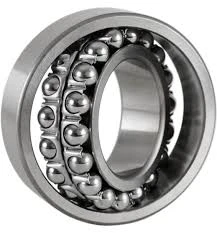
Dec . 21, 2024 02:09 Back to list
precision angular contact bearings
Precision Angular Contact Bearings An Overview
Precision angular contact bearings play a critical role in various high-performance machinery, enabling smoother motion and greater reliability in mechanical systems. Unlike conventional bearings, angular contact bearings are designed to support both radial and axial loads, making them essential in applications where precise positioning and high-speed operations are necessary.
Design and Features
The key feature of angular contact bearings is their ability to accommodate combined loads. The design consists of an inner and outer ring, balls, and a cage. The races are angled relative to the bearing axis, which allows them to handle significant axial loads in one direction while simultaneously managing radial loads. The angle of contact varies depending on the specific application; common angles are 15°, 30°, and 40°.
A hallmark of precision angular contact bearings is their manufacturing tolerances. They are constructed to meet strict quality standards, often labeled as ABEC grades (Annular Bearing Engineers' Committee). The higher the ABEC rating, the tighter the tolerances and the greater the precision of the bearing. This precision is crucial in applications such as machine tool spindles, robotics, and high-speed motors, where even the slightest misalignment can lead to significant performance issues.
Benefits
1. High Load Carrying Capacity The ability of angular contact bearings to support axial loads makes them ideal for high-load applications. They are often used in spindle assemblies where both radial and axial loads are prevalent.
2. Stability at High Speeds With precision engineering and balanced construction, these bearings can operate effectively at higher speeds, reducing the risk of overheating and premature failure.
3. Improved Rigidity The contact angle allows for a stiffer bearing arrangement. This rigidity is vital in applications where precision positioning is paramount, such as CNC machines and high-speed rotating equipment.
precision angular contact bearings

4. Versatile Configurations Depending on the load requirements, angular contact bearings can be arranged in various configurations. They can be set in pairs, back-to-back or face-to-face, to accommodate axial loads in either direction or to enhance overall load capacity.
5. Lower Friction The design of angular contact bearings ensures reduced friction, which translates to improved efficiency and lower energy consumption in machinery.
Applications
Precision angular contact bearings are utilized in a wide range of industries. In the automotive sector, they are essential in wheel hubs and engine components due to their ability to manage both axial and radial loads. In aerospace, these bearings are found in turbines, gearboxes, and actuators, where minimal weight and maximum reliability are crucial. Furthermore, in medical equipment, precision bearings ensure that devices such as MRI machines operate with the utmost accuracy.
Maintenance and Care
To maximize the lifespan of precision angular contact bearings, proper maintenance is essential. Regular lubrication is crucial to minimize wear and tear and prevent overheating. Additionally, monitoring for signs of contamination, misalignment, or excessive play can help catch potential issues before they escalate.
Conclusion
Precision angular contact bearings are an indispensable component in many high-performance applications. Their unique design allows for efficient handling of complex load scenarios while maintaining reliability and precision. As technology continues to advance, the role of these bearings will only expand, driving innovation in machinery design and performance.
Latest news
-
Grooved Ball Bearing Design and Functionality
NewsJun.04,2025
-
Concrete Mixer Bearing Load Capacity Testing
NewsJun.04,2025
-
6004 Bearing Dimensions in Robotic Joint Designs
NewsJun.04,2025
-
Advantages of Single-Row Deep Groove Ball Bearings
NewsJun.04,2025
-
Applications of Deep Groove Ball Bearings in Automotive Systems
NewsJun.04,2025
-
Innovations in Bearing Pressing Machine Design
NewsJun.04,2025
